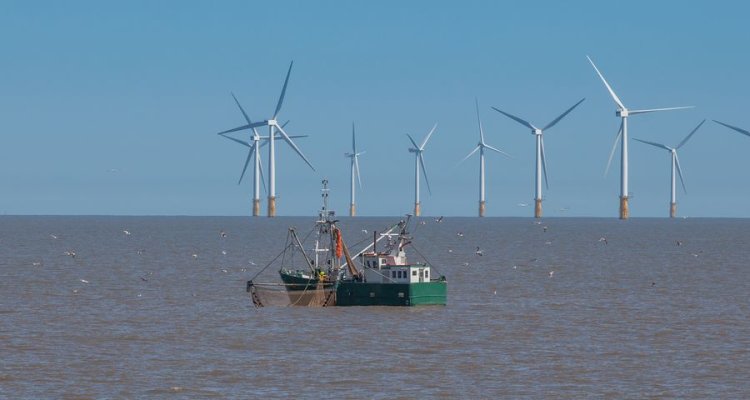
Showcase
Computer models measure effects of crowded North Sea
Wind farms, seaweed cultivation and busy shipping lanes are making the North Sea an increasingly crowded place. Modellers at Wageningen University & Research are researching the impacts of all this activity on marine mammals such as seals and dolphins. Their work includes studying the energy systems of whales, for example.
The wind power sector is driving the construction of large-scale offshore wind farms, sometimes paired with seaweed cultivation. This industrial activity is encroaching on the space available to marine mammals to feed, rest, and rear their young without being disturbed. The areas around wind farms are also possible poorer sources of food such as zooplankton or fish. “Zooplankton and fish eat algae. But the windmill poles alter the seawater current. This reduces the availability of nutrients and light for the algae,” explains ecologist Jaap van der Meer. “Seaweed also suppresses algae because it uses the same nutrients. If fewer algae are present, there’s less food available for marine mammals. And that can have an impact on their energy systems.”
If fewer algae are present due to offshore wind farms, there’s less food available for marine mammals
Energy models
The researchers are studying the impacts of these changes on the growth, survival and reproduction of marine mammals. They’re doing this by creating individual-based computer models of marine mammal populations. These models track whales, for example, as they grow, eat and die. The researchers also feed in information on changes in the North Sea such as the construction of wind farms. These models draw on underlying energy models. “We’ve used existing data on growth rates, for example, to calculate how much oxygen is used by whales for their growth. This has revealed that the energy consumption of whales is no greater than that of farm animals such as cows,” says Van der Meer. “Whales therefore don’t rely heavily on energy from their food to keep themselves warm in the water. We think that’s because whales are well insulated by their thick layer of blubber. Once we’ve finished making and analysing the computer models, we’ll have a better idea of what this kind of 'rules' in the energy management of marine mammals means for the impacts of all the changes taking place in the North Sea.”
I hope that other researchers will use these models, for example to determine the energy systems of cows or plants
According to Jaap van der Meer, the models could eventually be used to determine the energy systems of all organisms. “I hope that other researchers will use these models as the foundation of other individual-based population models, for example to determine the energy systems of cows or plants. Eventually, once we’ve gathered much more data, we’ll understand the impacts of the changes in the North Sea on marine mammals. We’ll then be able to help policy makers decide how many wind farms and seaweed farms you can build in the North Sea, and where to put them.”